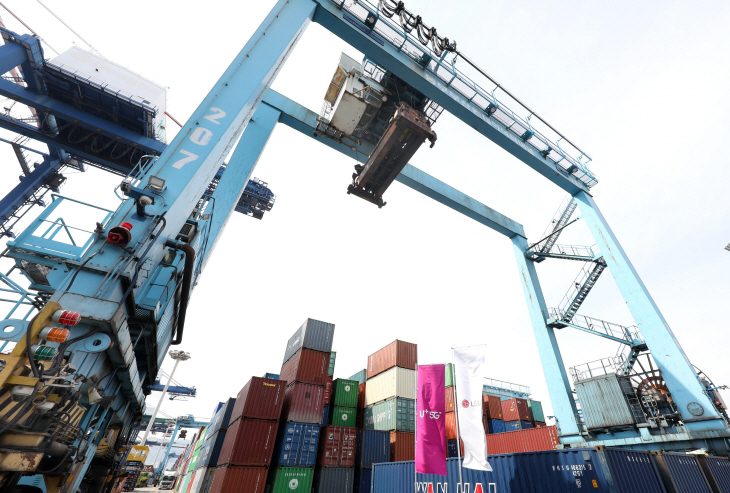
A shipyard crane, able to send camera feeds from its sensors and cameras to a control room via 5G network, picks up a cargo container at a container terminal in Busan Port. (LG U+)
LG U+ has set up a crane remote control system at Busan Port and aims to commercialize 5G network-based solutions for automated seaport infrastructure management, the company said Sunday.
The yard cranes at Busan Port are controlled remotely by an operator in an office, using the control system developed by the South Korean telecommunications firm.
The tall cranes, equipped with sensors and high-definition cameras, are designed to send live feeds to a control room via the 5G network. The solution allows workers to remotely control cranes to load and offload containers from freighters by watching on screens from the control room elsewhere in the port.
LG U+ has currently installed four 5G network stations at Busan Port to remotely control two yard cranes, it said. The company explained that the 5G network is required to reduce latency to low levels and allow operators to monitor and control the crane’s operation in real time.
The company said the technology could also increase work efficiency. Whereas four to five workers had to be deployed to operate one crane, the telecommunications firm’s new solution allows one operator to oversee four cranes at once from a control room.
The technology could also reduce safety risks and costs spent for crane operators who work in the cabin at the top of each crane, which leads to high labor costs and insurance premiums.
The remote controls of the 5G-based crane reduce the time required for workers to get used to controlling cranes as well. LG U+ said that it takes only a month of training for a worker to be able to control cranes from a remote office, whereas it could previously take three years for workers to be fully accustomed to their jobs.
LG U+ has so far spent 4 billion won ($3.6 million) to develop two semi-autonomous cranes since 2019.
For the port crane solution, LG U+ last year invested in South Korea’s system semiconductor developer Quopin and developed a multimedia interactive transfer chipset to transmit high-definition videos with ultralow latency.
LG U+ said it would continue to invest to roll out other solutions that could help automate port infrastructure here, including self-driving yard tractors, unmanned forklifts and drones that monitor the port’s cargo.
The company stressed that its solutions will work based on multiaccess edge computing, which helps ports safely keep their data within the private local port networks and reduce overall latency.
By Shim Woo-hyun (
ws@heraldcorp.com)






